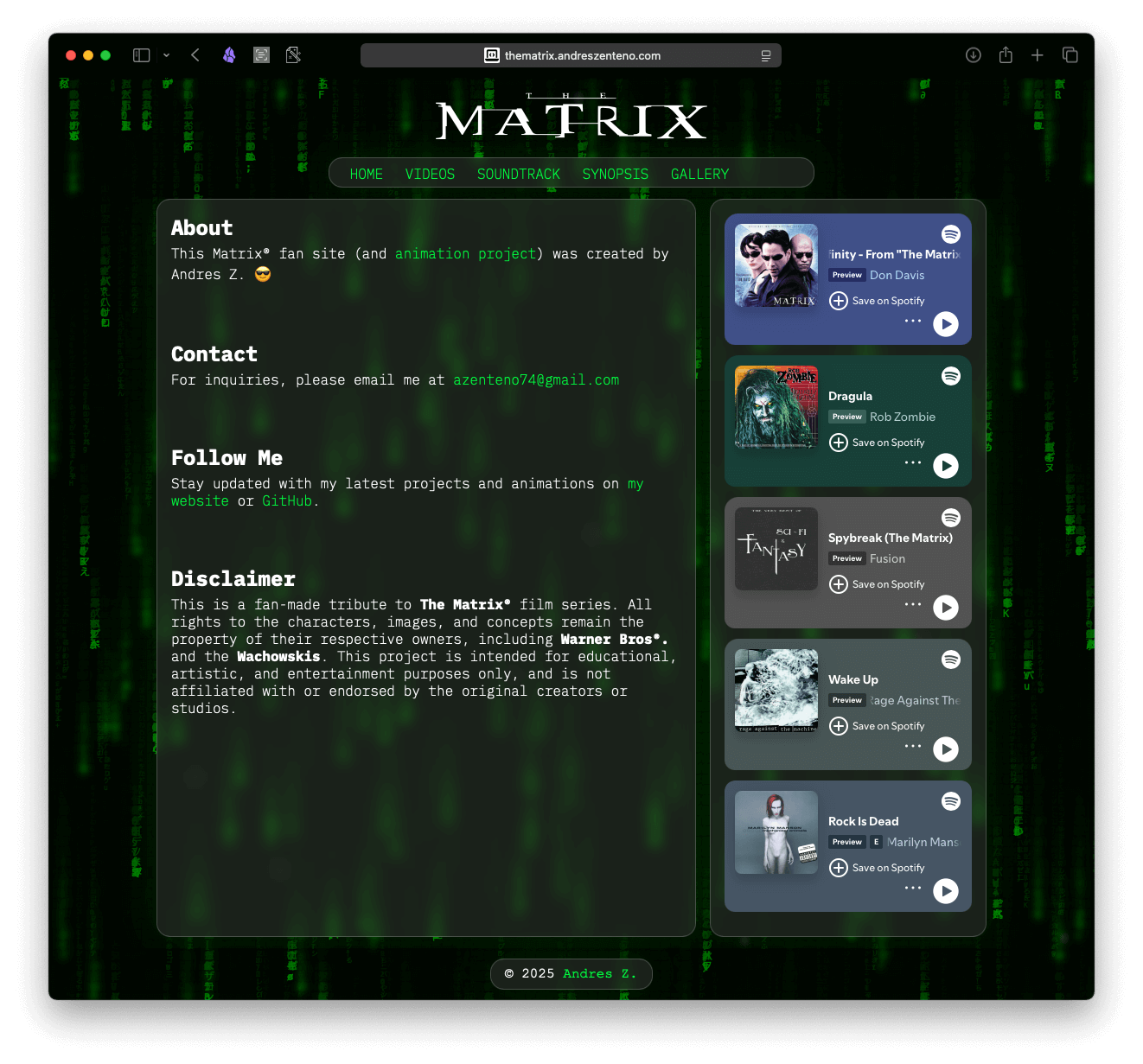Rediscovering the Joy of Building from Scratch
When was the last time you built something?
I mean really built it—from scratch.
If you have the materials, the tools, and the know-how, you can make your own furniture. It might take longer than ordering from IKEA, but you’ll get to decide how it looks, how it fits, and what it’s made of. It’ll be yours.

Just Files: Build a Blog with Next.js and React Markdown
I’ve always liked the idea of owning my content. Social platforms feel noisy; they encourage you to write for an algorithm, not for yourself. Markdown is the opposite: it’s quiet, portable, and durable. Just text — but you can shape text. So, I built a blog using Next.js and react-markdown. There is no database or content management system—just markdown files in a folder. Markdown in, HTML out.
The Joy of Writing Unnecessary Code: A Matrix Rain Animation with Canvas
Every once in a while, we stumble upon a project that might not save the world but reminds us why we fell in love with coding in the first place. This Matrix rain animation is precisely that—a visually satisfying, utterly impractical exercise in creativity. With HTML5’s <canvas> element, JavaScript’s requestAnimationFrame, and a sprinkling of CSS filters, we can bring to life the cascading green glyphs that define a generation of sci-fi."

Transforming a Samsung NC110 into a Public-Facing Server with Cloudflare
Learn how to turn a Samsung NC110 netbook into a secure, public-facing server using Cloudflare Tunnel. Maximize old hardware with modern tools.

How to Save Time on YouTube: Using Transcripts and ChatGPT to Get Straight to the Point
It’s frustrating to spend time on YouTube videos that promise quick solutions but leave you hanging until the very end. You start watching because the title claims it’ll teach you something important, whether it's a new productivity tool or an easy way to make money online. But before you know it, you've spent 30 minutes waiting for that crucial piece of information. This isn't accidental. Video creators do it on purpose because the longer you watch, the more money they make from ads and sponsorships.

Automating Your Obsidian Workflow with Templater: Two Key Scripts to Organize Your Notes
Obsidian is already a solid note-taking app. But when you throw Templater into the mix, things get interesting. With Templater, you can automate repetitive tasks, saving you time and letting you focus on the actual writing. Two scripts, in particular, stand out for helping organize notes: one to create a folder index and another to gather all those indexes into a single list.

How I Turned a Samsung NC110 into a Web Server
Repurposing an old Samsung NC110 netbook into a functional web server and development environment using Ubuntu Server and open-source tools.

Custom Hooks in React
Discover how to create reusable custom hooks in React to simplify your code and enhance maintainability. Learn with examples like useBreed and useDataSource.

Higher-Order Components in React
Learn how to use Higher-Order Components in React to share behavior and add functionality. Step-by-step guide with examples for printProps, withUser, and more.

Controlled vs. Uncontrolled Components in React
React is a powerful library for building user interfaces, and one of its core strengths lies in its flexibility. Among the many design patterns React offers, controlled and uncontrolled components are fundamental. Understanding these patterns can significantly impact how you manage state and handle user input in your applications.

Container Components in React
In the world of React, there's a design pattern called Container Components. If you're a beginner or intermediate React developer, you might be used to having each child component load its own data. Typically, you'd use hooks like useState and useEffect along with libraries like Axios or Fetch to get data from a server. This works, but it can get messy when multiple child components need to share the same logic. That's where container components come in.

Understanding Layout Components
Layout components in React are specialized components designed to arrange other components on a page. Their primary role is to manage the layout, allowing the main content components to remain agnostic about their placement. This separation of concerns enhances flexibility and reusability. Examples include split screens, lists, and modals.

The Dark Web: Exploring the Shadows Safely
The dark web often evokes images of clandestine activities and hidden dangers. Yet, it was initially designed with good intentions: to offer anonymity and a platform for free expression. While it has legitimate uses, like providing journalists a secure way to communicate with sources, it is also a hotbed for illicit activities. This dual nature requires us to approach it with caution and knowledge.
